
Worms 'N' Us: A look at 8 parasitic worms that live in humans
Take a trip through Scientific American's Worm Gallery and meet the charming, slinky creatures that turn your innards into their home sweet home
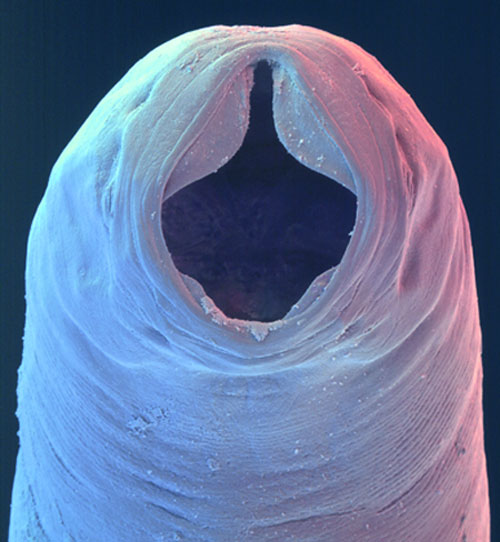
CLICK TO ENLARGE + Photo by D. Scharf, Courtesy of Parasitic Diseases, 5th Ed., Apple Trees Productions, LLC
Unlike most parasitic worms, which invade the body through the stomach, hookworm larvae can wiggle in through sweat glands or hair follicles in the skin. This typically happens when people walk, sit or lie on dirt containing human feces contaminated by hookworm larvae. Through the skin and into the blood vessels, the larvae make their way to the lungs, causing coughing and shortness of breath; they then migrate to the throat, where they are swallowed and delivered to the small intestine. They mature into adults measuring about 0.4 inch (10 millimeters) long, causing symptoms such as abdominal pain and anemia—a result of the worm sucking blood out of the intestinal walls. Some 740 million people, mostly those living in the warm, moist climates of Africa, Latin America, Southeast Asia and China, suffer from hookworm infections, according to the World Health Organization (WHO).
Ascariasis, the potentially deadly disease caused by the roundworm Ascaris, is the most common worm infection in humansaffecting as many as 1.5 billion people worldwide annually and striking hardest in tropical and subtropical regions with poor sanitation, according to the U.S. Centers for Disease Control and Prevention (CDC). People often catch ascariasis by ingesting vegetables or fruit grown in soil fertilized with human feces contaminated with its eggs. On hatching in the intestine, the eggs develop into larvae that migrate through the blood and lymph systems into the lungs, causing fever, shortness of breath and wheezing. (Some people actually cough up the larvae.) From the lungs, the larvae make their way up into the throat; there they are swallowed and passed into the small intestine, where they grow into adulthood. (Imagine earthworms as long as one foot, or 30 centimeters, crawling around in your small intestine.) Severe infections can lead to intestinal blockage and death. The WHO estimates that ascariasis causes 60,000 deaths per year, mainly in children.
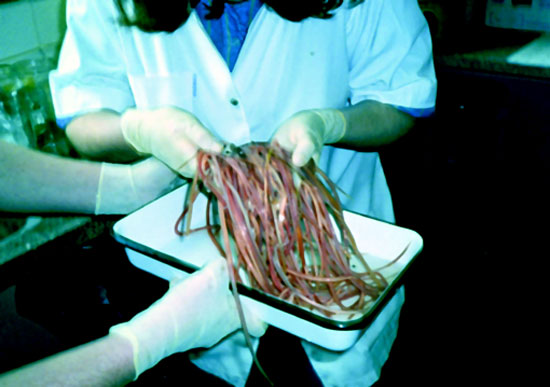
CLICK TO ENLARGE + Courtesy of Parasitic Diseases, 5th Ed., Apple Trees Productions, LLC

CLICK TO ENLARGE + Courtesy of Parasitic Diseases, 5th Ed., Apple Trees Productions, LLC
Trichuris trichiura, commonly known as a whipworm because it looks like a cow whip, grows up to about two inches (50 millimeters, or as long as a thumb). The most common way to catch whipworm is by ingesting dirt containing human feces that are loaded with its eggs (think: children playing in the dirt and then putting their fingers in their mouths). The whipworm, which sets up shop in the large intestine, is what Despommier says may be "the secret to curing Crohn's disease."
Patients with Crohn's disease—an autoimmune disorder in which the intestinal tract becomes chronically inflamed, leading to symptoms such as diarrhea, abdominal pain and rectal bleeding—are believed to have small proteins that resemble whipworm proteins jutting from the surfaces of their intestinal cells. Mistaking the protein protrusions for those of a whipworm, the immune system attacks them, causing Crohn's disease, Despommier explains. Studies have shown that when Crohn's patients are infected with whipworm, the body seems to redirect its focus away from its own cells and onto the worms, causing Crohn's symptoms to disappear. The problem with treating Crohn's disease with whipworm, of course, is that the worm causes its own suite of problems, including severe diarrhea, weight loss and anemia. Severe cases [see photo inset] can lead to rectal prolapse, a condition in which the walls of the rectum actually protrude from the anus.
Worldwide, some 800 million people, mostly children in tropical and subtropical climates, are infected with whipworm, according to the National Institute of Allergy and Infectious Diseases.
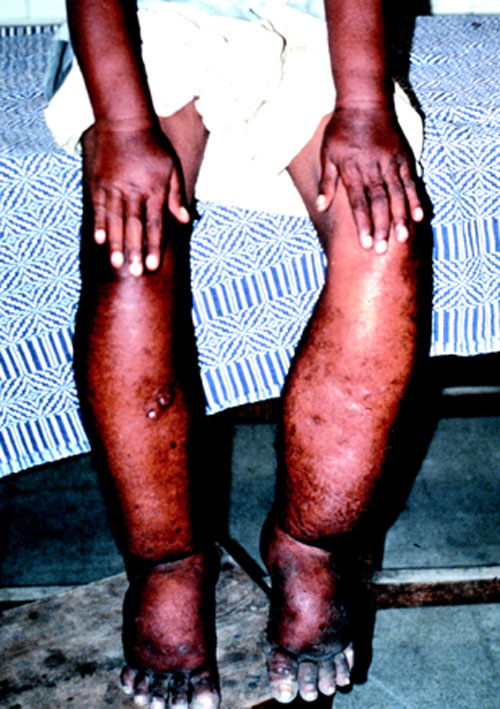
CLICK TO ENLARGE + Courtesy of Parasitic Diseases, 5th Ed., Apple Trees Productions, LLC
Unlike most parasitic worms, which inhabit the intestines, lymphatic filariae live in the lymphatic vessels and nodes. For reasons not completely understood by scientists, the presence of these worms in the lymph system can lead to severe inflammation called elephantiasis, which often affects the legs, arms, genitals and breasts [see photo]. Unfortunately for men, the worms have a propensity for the male genitalia. The worms get inside a person's body when a mosquito carrying their larvae sinks its proboscis into a victim's skin. The larvae travel through the skin and into the lymph vessels where they mature into adults measuring as long as four inches (100 millimeters). According to WHO, the infection usually begins in childhood but often takes years to cause elephantiasis.
Some 120 million people, mostly in the warm, humid climes of south Asia, Africa and the Americas, are infected with these tiny worms, and more than 40 million are disfigured by the infection, according to WHO.
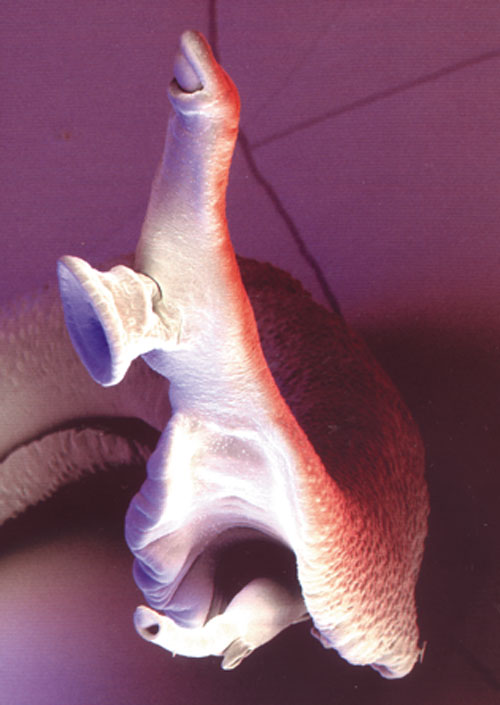
CLICK TO ENLARGE + Courtesy of Parasitic Diseases, 5th Ed., Apple Trees Productions, LLC
People develop schistosomiasis, or infections with schistosomes, by swimming in or touching water containing infected snails that release the larvae into the water. (The snails become infected in the first place because people with the disease urinate or defecate in the water.) The larvae penetrate a person's skin and journey through the bloodstream where they grow into adult worms measuring up to 0.6 inch (15 millimeters) long. The adults, which can live in the bloodstream for years, lay eggs that travel to the liver, bladder, lungs or intestines, causing inflammation, scarring and organ enlargement. (These symptoms are caused by the eggs, not the actual worms.) Infections that go untreated for years can lead to fatal intestinal bleeding or bladder cancer. According to WHO, about 200 million people, most of them in Africa, are infected with schistosomes.
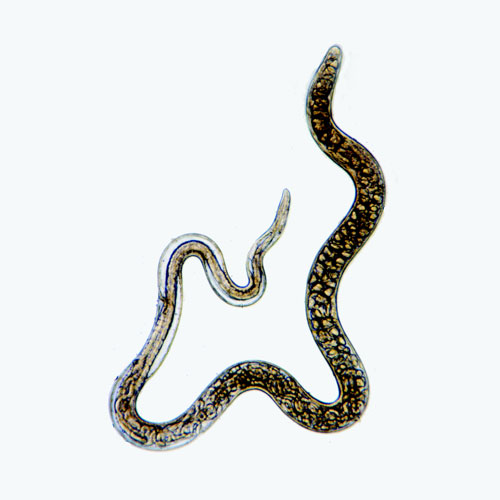
CLICK TO ENLARGE + Courtesy of Parasitic Diseases, 5th Ed., Apple Trees Productions, LLC
Beware of undercooked pork chops, tenderloin and sausages. If pork is your pleasure, make sure you cook it through to 170 degrees Fahrenheit (77 degrees Celsius); that should be enough to scorch any Trichinella larvae that may be hiding within. The larvae are encapsulated in protective coats that are digested by stomach acid. Once released, the larvae migrate to the small intestine and develop into adults measuring as long as 0.1 inch (three millimeters). Trichinella spiralis females, like the one shown in the photo, lay larvae that journey through the bloodstream and burrow into the muscle fibers, enveloping themselves in a cyst or protective covering. In the first few days of a Trichinella infection, a person may have symptoms such as vomiting, diarrhea, fever and abdominal pain. Most cases are mild, but severe infections can lead to potentially fatal heart and breathing problems. Generally the more worms eaten, the more severe the symptoms.
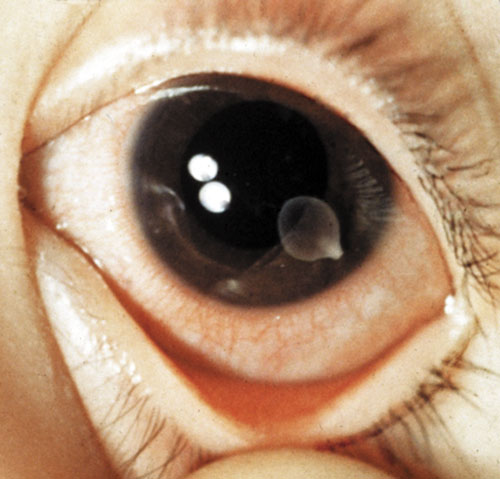
CLICK TO ENLARGE + Courtesy of Parasitic Diseases, 5th Ed., Apple Trees Productions, LLC
People accidentally ingest immature worms by eating raw or undercooked pork. Once the worms pass into the intestines, they latch onto the intestinal walls with suckers and hooks and begin to grow—and grow. The pork tapeworm shown here, Taenia solium, can grow as long as 20 feet (six meters). Often, people don't even know they have tapeworm until they see the worms—or pieces of them in their stool. If a person ingests the tapeworm eggs (by, for example, drinking water contaminated by egg-laden human feces), the eggs hatch into larvae the stomach and travel into the small intestine. From there, they may enter the bloodstream and migrate to the muscles, eyes or brain, where they can cause seizures, headaches and potentially fatal brain swelling.
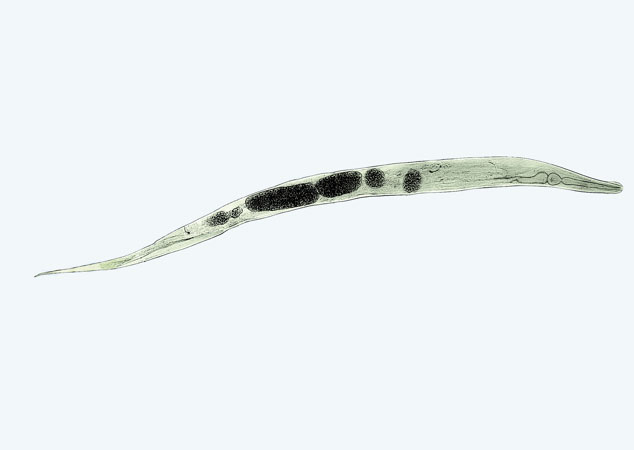
CLICK TO ENLARGE + Courtesy of Parasitic Diseases, 5th Ed., Apple Trees Productions, LLC
Pinworm is the most ubiquitous parasitic worm infecting people in temperate climates—places like the U.S., Europe and most of China, which are neither tropical nor polar, but have four seasons. Nearly all children catch pinworm before they reach age 12 (yes, that means you, too) by digesting tiny bits of fecal matter from other kids. Pinworm inhabits the colon and rectum, feeding on Escherichia coli (E. coli) bacteria in the stool. Late at night when children are asleep, the female pinworm, which measures about the length of a staple (0.5 inch or 13 millimeters), emerges from the anus and lays her eggs on the surrounding skin. The eggs are itchy, causing children to scratch and contaminate their fingers. When they suck their thumbs, or touch other children who suck their thumbs, the cycle starts all over again.
